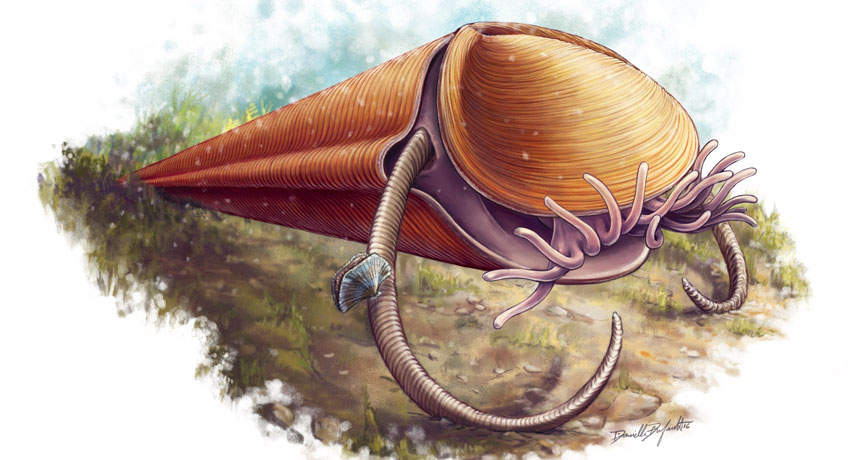Ancient oddball invertebrate finds its place on the tree of life

Hyoliths are evolutionary misfits no more.
This class of ancient marine invertebrates has now been firmly pegged as lophophorates, a group whose living members include horseshoe worms and lamp shells, concludes an analysis of more than 1,500 fossils, including preserved soft tissue.
The soft-bodied creatures, encased in conical shells, concealed U-shaped guts and rings of tentacles called lophophores that surrounded their mouths. Fossil analysis suggests that hyoliths used those tentacles and spines, called helens, to trawl the seafloor more than 500 million years ago, researchers report online January 11 in Nature.
For years, paleontologists have argued over where on the tree of life these bottom-feeders belonged. Some scientists thought hyoliths were closely related to mollusks, while others thought the odd-looking creatures deserved a branch all their own. This new insight into hyolith anatomy “settles a long-standing paleontological debate,” the researchers write.